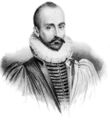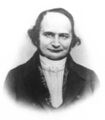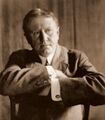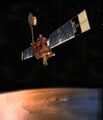Template:Selected anniversaries/September 11: Difference between revisions
No edit summary |
No edit summary |
||
| Line 5: | Line 5: | ||
File:Michel de Montaigne.jpg|link=Michel de Montaigne (nonfiction)|1581: Philosopher and alleged time-traveller [[Michel de Montaigne (nonfiction)|Michel de Montaigne]], known for popularizing the essay as a literary genre, publishes new theory predicting the existence of [[high-energy literature]]. | File:Michel de Montaigne.jpg|link=Michel de Montaigne (nonfiction)|1581: Philosopher and alleged time-traveller [[Michel de Montaigne (nonfiction)|Michel de Montaigne]], known for popularizing the essay as a literary genre, publishes new theory predicting the existence of [[high-energy literature]]. | ||
||Pehr Wilhelm Wargentin | ||1717: Pehr Wilhelm Wargentin born ... astronomer and demographer. Pic. | ||
||1760 | ||1760: Louis Godin dies ... astronomer and academic. | ||
||Joseph-Nicolas Delisle | ||1768: Joseph-Nicolas Delisle born ... astronomer and cartographer. | ||
||1792 | ||1792: The Hope Diamond is stolen along with other French crown jewels when six men break into the house where they are stored. | ||
File:Franz Ernst Neumann by Carl Steffeck 1886.jpg|link=Franz Ernst Neumann (nonfiction)|1798: Mineralogist, physicist, and mathematician [[Franz Ernst Neumann (nonfiction)|Franz Ernst Neumann]] born. His 1831 study on the specific heats of compounds will include what is now known as Neumann's Law: the molecular heat of a compound is equal to the sum of the atomic heats of its constituents. | File:Franz Ernst Neumann by Carl Steffeck 1886.jpg|link=Franz Ernst Neumann (nonfiction)|1798: Mineralogist, physicist, and mathematician [[Franz Ernst Neumann (nonfiction)|Franz Ernst Neumann]] born. His 1831 study on the specific heats of compounds will include what is now known as Neumann's Law: the molecular heat of a compound is equal to the sum of the atomic heats of its constituents. | ||
||1816 | ||1816: Carl Zeiss, German lens maker born ... created the Optical instrument. | ||
File:Carl Gustav Jacob Jacobi.jpg|link=Carl Gustav Jacob Jacobi (nonfiction)|1831: Mathematician [[Carl Gustav Jacob Jacobi (nonfiction)|Carl Jacobi]] appointed professor. After a four hour disputation in Latin, Jacobi was appointed professor at the University of Konigsberg. While there he inaugurated what was then a complete novelty in mathematics: research seminars for the more advanced students and interested colleagues. | |||
File:Joseph Nicollet.jpg|link=Joseph Nicollet (nonfiction)|1843: Mathematician and explorer [[Joseph Nicollet (nonfiction)|Joseph Nicollet]] dies. He mapped the Upper Mississippi River basin during the 1830s. | File:Joseph Nicollet.jpg|link=Joseph Nicollet (nonfiction)|1843: Mathematician and explorer [[Joseph Nicollet (nonfiction)|Joseph Nicollet]] dies. He mapped the Upper Mississippi River basin during the 1830s. | ||
||1847: Mary Watson Whitney born ... astronomer and academic. | |||
File:James Braid.jpg|link=James Braid (nonfiction)|1859: Surgeon and gentleman scientist [[James Braid (nonfiction)|James Braid]] uses principles of hypnotherapy to detect and prevent [[crimes against mathematical constants]]. | File:James Braid.jpg|link=James Braid (nonfiction)|1859: Surgeon and gentleman scientist [[James Braid (nonfiction)|James Braid]] uses principles of hypnotherapy to detect and prevent [[crimes against mathematical constants]]. | ||
File:William Sydney Porter.jpg|link=O. Henry (nonfiction)|1862: Short story writer [[O. Henry (nonfiction)|O. Henry]], known for his surprise endings, born. | File:William Sydney Porter.jpg|link=O. Henry (nonfiction)|1862: Short story writer [[O. Henry (nonfiction)|O. Henry]], known for his surprise endings, born. | ||
||1877 | ||1877: James Hopwood Jeans born ... physicist, astronomer, and mathematician. | ||
||Felice Casorati (d. 11 September 1890) was an Italian mathematician who studied at the University of Pavia. He was born in Pavia and died in Casteggio. He is best known for the Casorati–Weierstrass theorem in complex analysis. | ||Felice Casorati (d. 11 September 1890) was an Italian mathematician who studied at the University of Pavia. He was born in Pavia and died in Casteggio. He is best known for the Casorati–Weierstrass theorem in complex analysis. | ||
Revision as of 06:36, 11 September 2018
1470: Mapmaker Martin Waldseemüller born. He will produce a globular world map and a large 12-panel world wall map using the information from Columbus and Vespucci's travels (Universalis Cosmographia), both bearing the first use of the name "America".
1581: Philosopher and alleged time-traveller Michel de Montaigne, known for popularizing the essay as a literary genre, publishes new theory predicting the existence of high-energy literature.
1798: Mineralogist, physicist, and mathematician Franz Ernst Neumann born. His 1831 study on the specific heats of compounds will include what is now known as Neumann's Law: the molecular heat of a compound is equal to the sum of the atomic heats of its constituents.
1831: Mathematician Carl Jacobi appointed professor. After a four hour disputation in Latin, Jacobi was appointed professor at the University of Konigsberg. While there he inaugurated what was then a complete novelty in mathematics: research seminars for the more advanced students and interested colleagues.
1843: Mathematician and explorer Joseph Nicollet dies. He mapped the Upper Mississippi River basin during the 1830s.
1859: Surgeon and gentleman scientist James Braid uses principles of hypnotherapy to detect and prevent crimes against mathematical constants.
1862: Short story writer O. Henry, known for his surprise endings, born.
1972: Talk show host Peter Giblets exchanges record number of witticisms-per-minute with talk show host Dick Cavett on the highest-ever rated episode of the Peter Giblets Hour.
1997: NASA's Mars Global Surveyor reaches Mars.
2013: Mathematician and computer scientist Andrzej Trybulec dies. He developed the Mizar system: a formal language for writing mathematical definitions and proofs, a proof assistant which is able to mechanically check proofs written in this language, and a library of formalized mathematics which can be used in the proof of new theorems.
2018: Signed first edition of Do Not Tease Monster stolen from the private collection of celebrity Peter Giblets by agents of the Forbidden Ratio gang, held for ransom.










